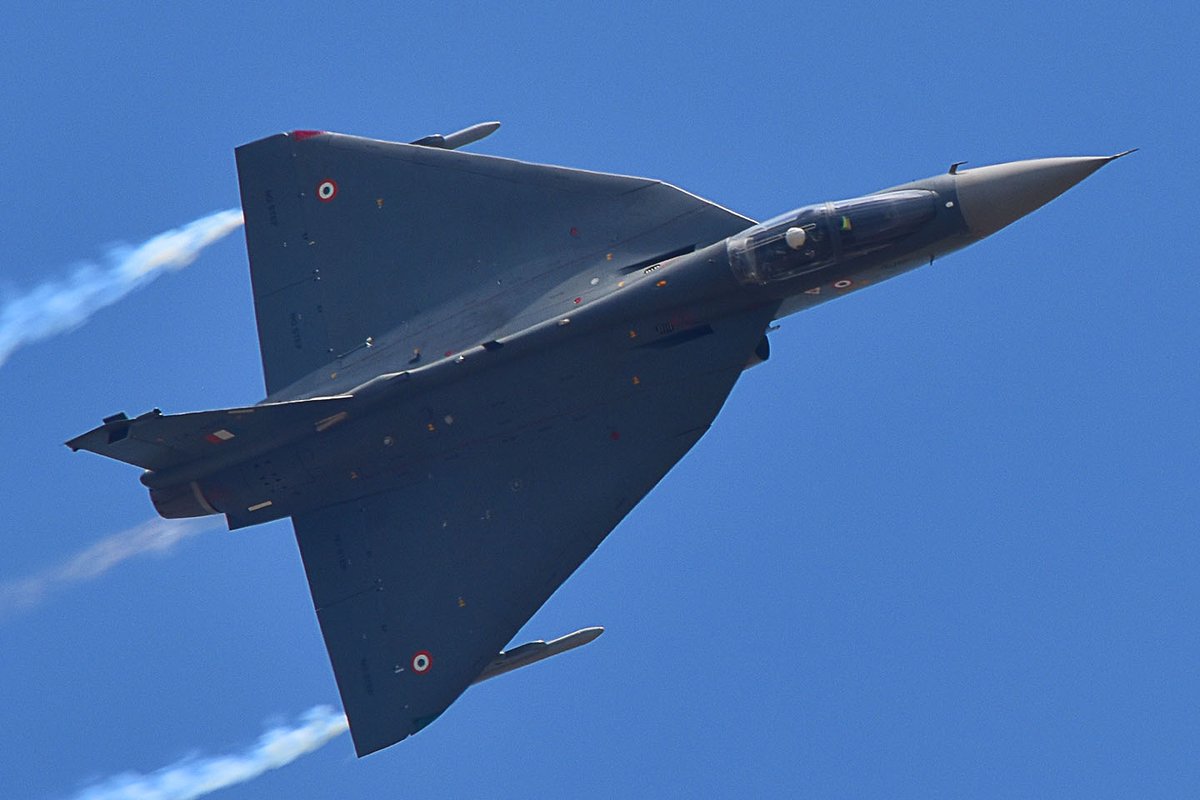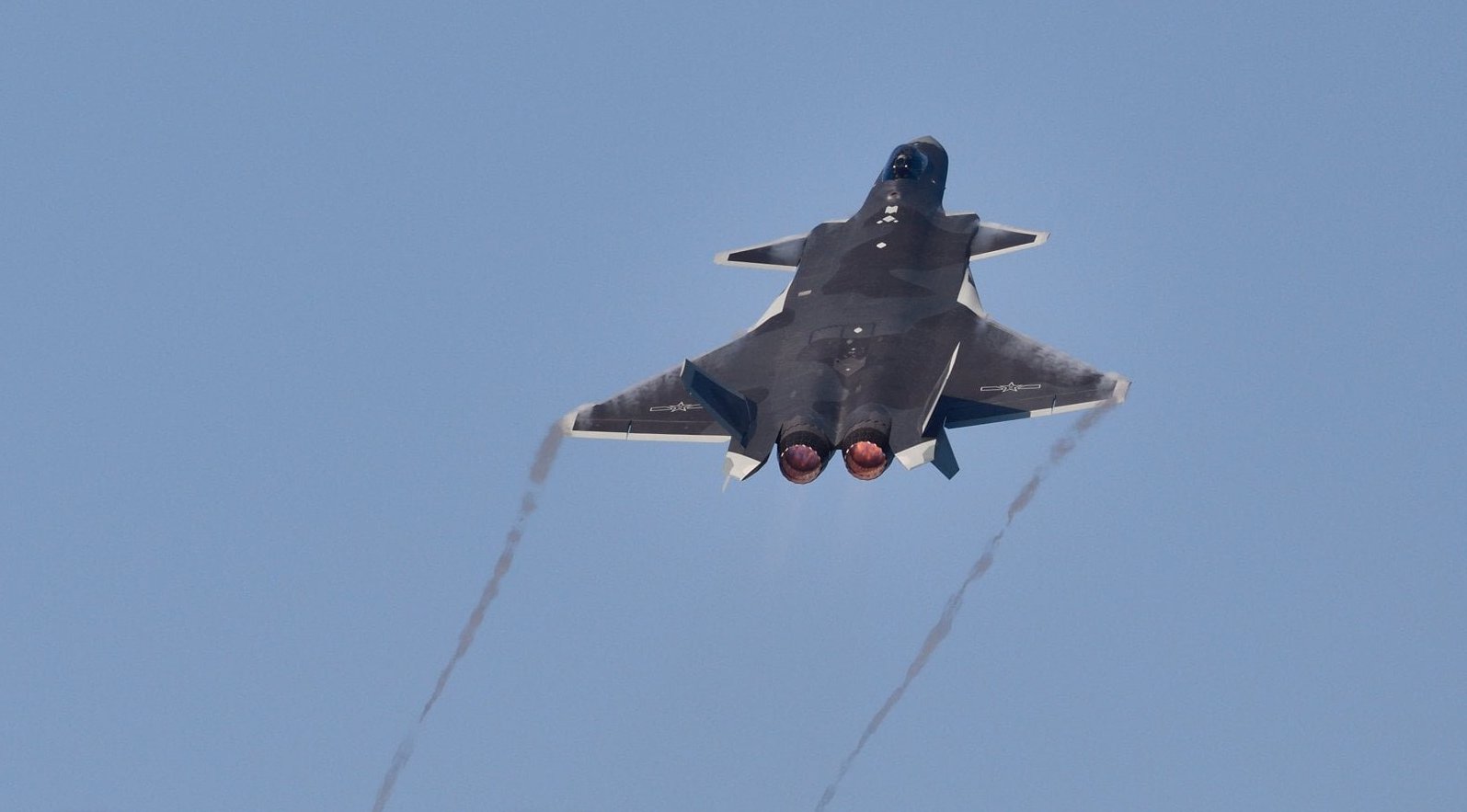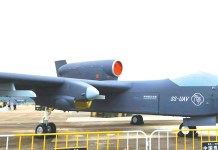The indigenous LCA Tejas aircraft program has faced delays due to multiple factors such as lack of coordination among stakeholders and relaxed approach of the monitoring agencies towards enforcing timelines.
FACE-OFF: China’s Development Of Powerful Directed Energy Weapons (DEWs) Triggers A Global ‘Laser War’?
With JF-17 Out, India’s HAL Tejas ‘On Verge’ Of Winning Malaysian Military Aircraft Tender – Local Media
There are pending issues related to the aircraft’s engine, its weapons package, and the time taken to roll out prototypes as well.
Recently, decisions regarding engines for this Light Combat Aircraft have been making headlines. Perceived rival China seems to be making huge strides in indigenous aircraft and engine development, while Indian domestic development continues to lag behind. The likelihood of the Kaveri engine becoming operational seems like a pipe dream.
Tejas’ Engine
In 1983, the Government of India authorized the design, development, and manufacture of the LCA. The target was to evolve 6 flying prototypes over a period of 8-10 years. The LCA was to be fitted with the indigenously made Kaveri engine.
The ambitious LCA project, under Defence Research and Development Organisation (DRDO) and state-owned Hindustan Aeronautics Limited (HAL), aimed for the full development and integration of an airframe and a multi-mode radar, a jet engine, and a flight control system along with other components.

The development of the Kaveri engine for Tejas was undertaken by Gas Turbine Research Establishment (GTRE). However, the thrust to the weight ratio of the engine was below the required figure for the LCA aircraft and the project turned out to be quite challenging.
Joseph P Chacko, author and military aviation analyst, told the EurAsian Times, “The Kaveri engine is a challenging project because it is expected to be flat rated which means the aircraft engine will be able to constantly produce the desired thrust. This is because all existing engines lose performance on terrains like the hot deserts, high plateaus, low sea levels, etc. This is particularly a concern for the fighter aircraft operating over the Indian terrain.”
World’s ‘Most Dangerous’ Stealth Fighter Jet – Why F-35 Lightning II Easily Beats F-22 Raptor, J-20 & Su-57 In Lethality?
He mentioned that despite Kaveri having a good core called Kabini, the engine still suffers in the heat-prone areas. “The maker GTRE has asked for specific help but gets stuck due to the commercial, political and technical conditions set by the prospective partner […] Another reason is that the engine requirement of the LCA and future fighter projects have changed and India is now looking at fulfilling the newer specifications,” he added.
Either way, the DRDO, after putting in almost four decades of developmental effort into it, was forced to steer the Kaveri engine away from the Tejas program. This seems to have left a gap in the indigenous jet engine development.
Substitute: The GE Engine
Ever since its first flight in January 2001, Tejas has been powered by a single General Electric (GE) F404-IN20 engine. HAL is equipping this engine in its first 123 fighters.
“The F404 family of engines has proven itself in operations all over the world and we have committed to deliver all 99 engines and support services by 2029”, Chris Cyr, Vice President of GE Aviation told Business Standard.

Recently, HAL placed an order worth $716 million for 99 more engines for the indigenous LCA. This new batch of GE engines will be the bigger, more powerful GE F-414 engines for the Tejas Mark 2 fighter jets.
Unlike the F-404 engines that are required in limited quantities and thus will not be built in India, the F-414s are likely to be made in the country in larger numbers.
China Is Still Ahead
Despite the likelihood of the advanced F-414 engines being built in India, the fact remains that neighbor China is performing better in this field in terms of indigenization.
China has started equipping Chengdu J-10 jets with indigenous engines. The move reflects China’s confidence in its locally developed technology.
South Korean F-35 Stealth Aircraft Makes First Public Appearance At Defense Expo Amid Regional Tensions
The operationalization of these indigenous engines represents a major milestone for China’s aviation industry as well. It suggests that China is now content with the reliability and performance of the WS-10 engine, which has undergone testing for the past decade. The fourth production batch of J-10Cs was rolled out in 2019.

On this achievement, Chacko said, “The Chinese have been claiming the success of their WS-10 engines every year for more than a decade and then keep buying the Russian engines.” He pointed out that developing aircraft engines is a difficult task.
“Only the US, the UK, and France have efficient turbofans. Russians are struggling with the engine for their fifth-generation aircraft. [Their] Al-31 is much better than the smokey RD-33’s.”
Earlier, as EurAsian Times repored, China’s J-20 ‘Mighty Dragon’, was spotted with what is believed to be the domestically made WS-10C engine at the Zhuhai airshow. A part of an effort to fully replace the Russian-made AL-31F turbofans, China’s journey towards developing a fully capable aero-engine has been rocky but unrelenting.
British, French Firms Enter The Fray
India’s plans to develop a suitable jet engine have been supported by the British firm Rolls-Royce. The company announced its keenness to work with India to co-develop and manufacture engines for India’s fifth-generation fighter aircraft program, called Advanced Medium Combat Aircraft (AMCA) earlier this month.
Rolls-Royce India and South Asia president, Kishore Jayaraman, told The Print that the country will own the IP rights for the engines in case of a partnership.

India is currently in talks with the British and French firm Safran whose engine powers the Rafale jets, and the American GE, for potential collaboration to manufacture a joint fighter engine in India. The decision regarding this venture will depend primarily on cost, as well as on finer details like each company’s transfer of technology offers.
BrahMos-II Missile: How India’s Hypersonic Missile Program Will Get A ‘Big Boost’ From Russian Technology?
In the meanwhile, as Chacko puts it, the “Kaveri project is spawning derivatives for the UAV program and marine propulsion but we are yet to see the results. The experience will definitely be a plus point when GTRE begins developing a newer Kaveri version.”
Despite the slow pace of India’s indigenous engine development, collaborations and repurposing of older projects might be a ray of hope. However, the chances of a completely indigenously designed and developed jet engine for the Tejas is not likely to materialize soon.
- Co-authored by Shreya Mundhra/EurAsian Times Desk
- Contact the authors at etdesk@eurasiantimes.com
- Follow EurAsian Times on Google News




